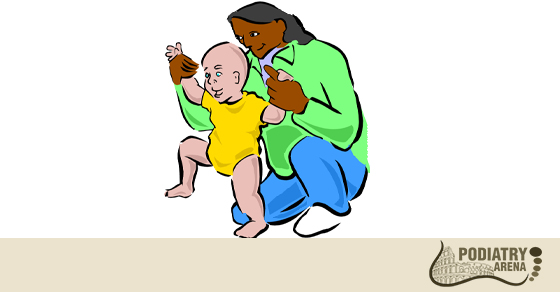[ad_1]
Background: Toe strolling is outlined because the absence or lack of ability to acquire heel strike in the course of the preliminary
contact and stance phases of the gait cycle1
. Many creating toddlers are likely to stroll with a large base of
help, externally rotated hips, flexed knees and plantarflexed feet2
. Toe strolling is taken into account a typical
a part of a creating gait sample however begins to be thought of irregular previous the age of three years3
. Toe
strolling can happen with varied diagnoses, resembling Cerebral Palsy, Autism Spectrum Dysfunction, Muscular
Dystrophy or Spina Bifida4
. Nevertheless, when no different orthopedic, musculoskeletal, or neurological
situation that may trigger this gait sample may be recognized, a analysis of Idiopathic Toe Strolling (ITW)
is given. The aim of this systematic evaluate is to supply a comparability of the gait traits and
muscle firing patterns in kids with a analysis of ITW and Delicate Spastic Diplegia (MSD), a kind of
Cerebral Palsy. Delicate Spastic Diplegia is a neurological situation that’s characterised by muscle
weak spot, adjustments in muscle tone, and and impaired selective motor management. The decrease extremities are
extra affected, which ends up in deficits in useful mobility. MSD may be usually confused with ITW resulting from
similarities in gait patterns. The authors recognized 5 research that in contrast gait patterns and muscle firing
patterns in kids with MSD and ITW.
Strategies: The authors searched 4 databases between the dates of September 13-28, 2016, which
included PubMed, CINAHL, SPORTDiscus, and Medline. The next search phrases have been utilized for
every database: (Idiopathic Toe Strolling and Cerebral Palsy), (Idiopathic Toe Strolling and Spastic
Diplegia), (Routine Toe Strolling and Cerebral Palsy), and (Routine Toe Strolling and Spastic Diplegia).
Articles have been included in the event that they met the next inclusion standards: a analysis of ITW or MSD, together with
topics between the ages of 3-18 in ITW group and 2-18 in MSD group, and didn’t embrace topics
with comorbid circumstances beforehand recognized to trigger toe strolling. Articles have been excluded in the event that they
primarily mentioned bodily remedy intervention for ITW or primarily mentioned medical intervention for
ITW. After thorough evaluate of the analysis, 5 articles remained that met our inclusion and exclusion
standards.
Outcomes: Two of the research checked out kinematic variables in kids with ITW and MSD. Each authors
concluded that knee kinematics have been regular within the ITW group3,5. Nevertheless, kids with MSD introduced
with elevated knee flexion angles, presumably resulting from elevated hamstring tone. Youngsters with ITW
confirmed elevated plantarflexion at preliminary contact and lively muscle contraction of their gastrocnemius
muscle mass throughout swing part, inflicting them to strike in an equinus position3
. This differed from the sample
of kids with MSD. The kids with MSD additionally demonstrated elevated plantarflexion at preliminary
contact, however this was due to a rise in knee flexion, which modified the place of the foot. This
didn’t enable the kid to contact the bottom with the mid or rearfoot3,5. There have been three research that
utilized electromyography to have a look at variations in muscle timing between kids with ITW, MSD, and
sometimes creating kids. All articles agree that there have been no important variations in muscle firing
between ITW and MSD throughout gait6,7,8. Youngsters with MSD show an compulsory extensor synergy,
which causes coactivation of the quadriceps and gastrocnemius muscle mass throughout isometric knee
extension7,8. This isn’t seen in kids with ITW and kids with out neurological deficits. That is
clinically important as a result of it might enable bodily therapists to distinguish between kids with ITW
and MSD utilizing floor electromyography or palpation throughout resisted knee extension.
Dialogue and Conclusions: As a result of ITW is a analysis of exclusion, there are restricted checks and
measures that clinicians can make the most of. Clinically, the outcomes of this systematic evaluate can be utilized to assist
differentiate between a analysis of ITW and MSD. Clinicians can carry out a easy examination,
together with gait evaluation and electromyography or palpation throughout resisted contraction, to assist
differentiate between ITW and MSD. It will be significant for clinicians to have the ability to make this differentiation,
as a result of the 2 circumstances are handled otherwise. Early detection of the proper trigger for toe strolling can
improve entry to each bodily remedy and medical interventions, which can vastly enhance the kid’s
prognosis.
Click on to develop…
[ad_2]



